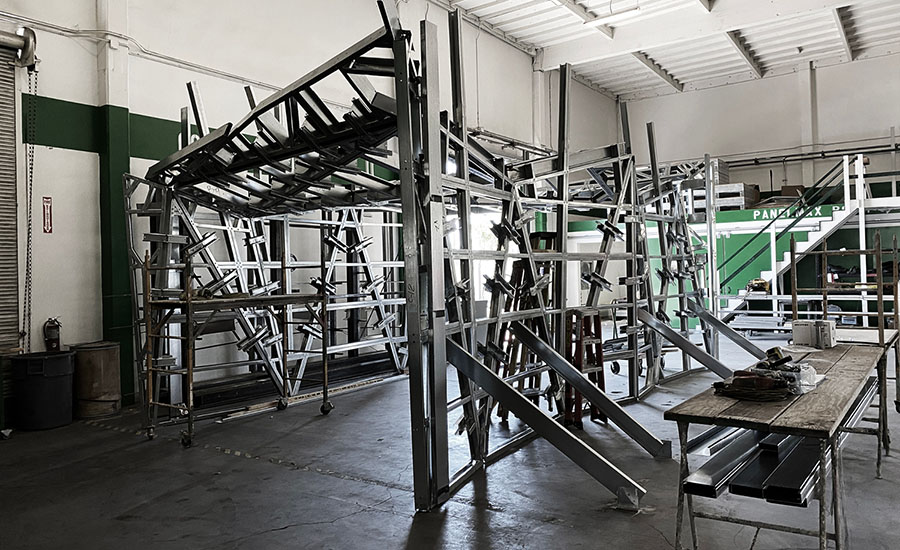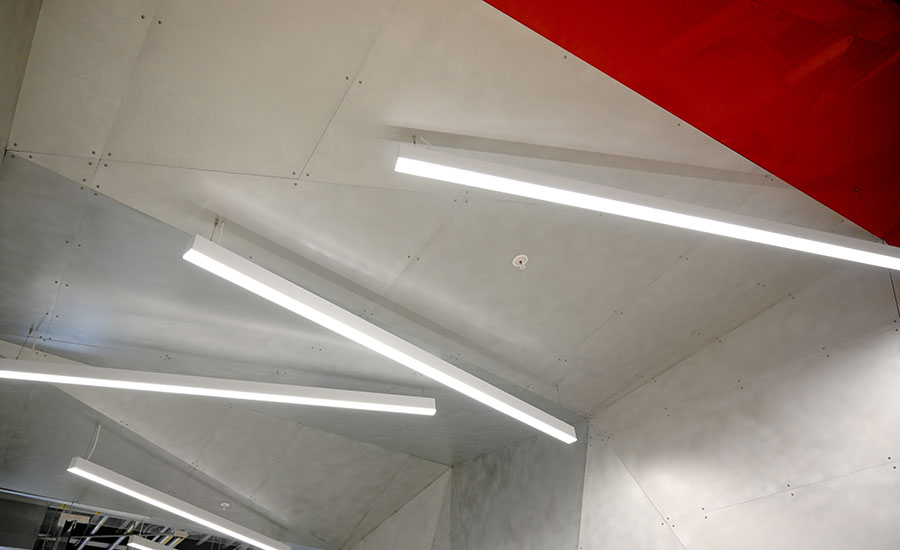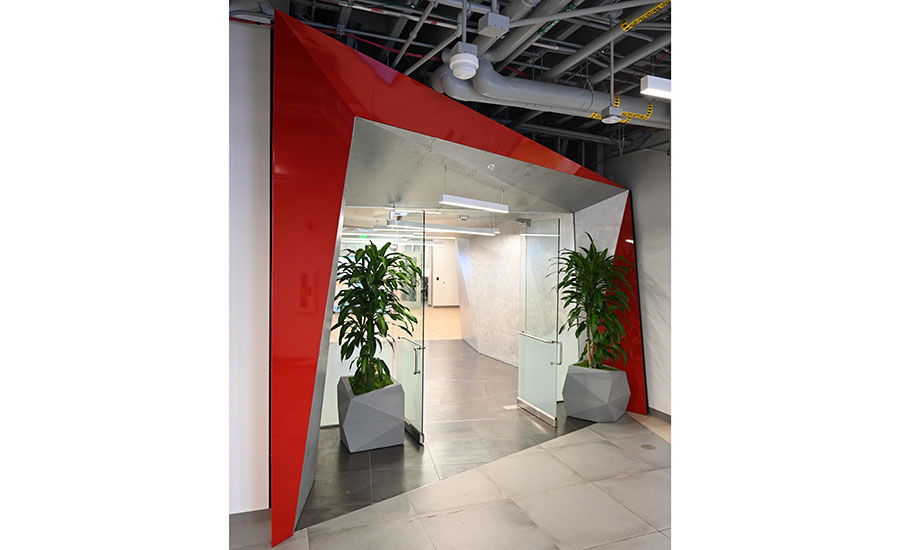STUDIO Computational Construction – A complex fabrication collaboration in rapid time for The Portal
Playa Vista, California, USA
A combination of team-work, digital fabrication and computational design helped STUDIO, KHS&S - West and SLAM come together to fast track this elaborate custom wall solution.
Positioned at the heart of a new medical clinic in Playa Vista, California, The Portal is a sculptural geometric gateway. With architectural design themes influenced by the local Silicone Beach giants, such as Google, IMAX, Facebook, Electronic Arts, and many more; as well as a nod to the aeronautical manufacturing history of the area, the task called for a complex design solution.
STUDIO was engaged to assist in the computational design and fabrication of the structure. It was a perfect project for STUDIO, which prides itself on its ability to build complex and curved geometry quickly and precisely in light steel, expanding design possibilities and increasing control during the construction process.
The intricacies of The Portal
The design of The Portal, by architectural firm SLAM, had no two matching panels and its adjacent panels were set at varying angles. With a total of 32 unique triangular facets, innovative thinking was required to fabricate and assemble it within the tight time schedule and budget available. STUDIO partnered with design-assist specialty building company KHS&S West to develop a design-to-fabrication workflow that would ensure the project’s success.
Two Howick roll-forming systems were put to work to output the components – the Howick FRAMA™ 5600 and Howick FRAMA™ 3200, which are both fully functioned, dedicated frame and truss component manufacturing machines. STUDIO founder Scott Mitchell says the use of these systems simplified the complex project in terms of the variety of components, and elevated the precision of its details.
The constructable solution involved light gauge steel studs as supporting frames for each triangular facet. CNC-punched fastener holes on the studs aligned with laser-cut holes on the aluminium panels for precise placement at controlled angles.
“In order to maximise our team’s efficiency, we replaced components like clips or custom brake shapes with CNC studs to maximise the use of Howick machines. In the end The Portal’s frame and finish were installed onsite with one sixteenth inch tolerance in just three days,” Scott enthuses.
STUDIO used its own StudFinderTM software to design The Portal and prepare it for fabrication and assembly. StudFinderTM automates much of the steel stud design-to-fabrication process and is designed specifically for handling even the most complex light gauge use cases. Working between both the Revit/Dynamo and Rhinoceros3D/Grasshopper platforms, StudFinderTM can be utilized in computational and generative workflows. These innovative workflows are critical for complex projects like the Portal, and their usefulness extends beyond complex geometry to things like mass customization and structural optimization.
Tapping Howick’s potential
Scott Mitchell founded STUDIO in 2019, recognising an opportunity to use precision CNC steel studs to efficiently construct complex and curved structures. He knew from experience that Howick technology offered the potential he was looking for.
“One of the things we do really well, is figure out how to make use of fabrication processes in ways no one else has thought of before. You might say we intentionally misuse machines in order to expand their capabilities.” Scott notes.
Testing the capabilities of Howick and other technology is all part of a day’s work at STUDIO as Scott and his team firmly believe that innovation requires a combination of experimentation and application.
“We build in time to play with new machines, algorithms, and workflows. The knowledge gained and tools developed integrate back into projects and push the industry forward,” Scott says.
When not experimenting and researching new approaches, STUDIO’s focus is on the likes of:
- Defining and refining project geometry to simplify the process of building interesting shapes
- Optimising its design-to-fabrication software to generate 3D models and CNC fabrication information
- Handling the precise prefabrication, assembly and delivery of components
Howick FRAMA machines
Both the FRAMA™ 5600 and FRAMA™ 3200 feature Howick’s unique end-bearing stud detail for the production of lead-bearing frames.
The FRAMA™ 5600 can roll up to 1.6mm coil for frame and truss components needing greater loading capacity. The heavier and wider sections it produces make it ideal for many residential and commercial construction applications. Meanwhile, the FRAMA™ 3200 is the go-to Howick workhorse for standard framing requirements, producing up to 900m/2952ft of framing per hour at a gauge range of 0.75 to 1.15mm / 22 to 18 gauge. Internet connectivity on both these systems allows for remote fault finding and maintenance to reduce down time.
To find out more about this project, you can see SLAMs write-up here or watch the videos below.




